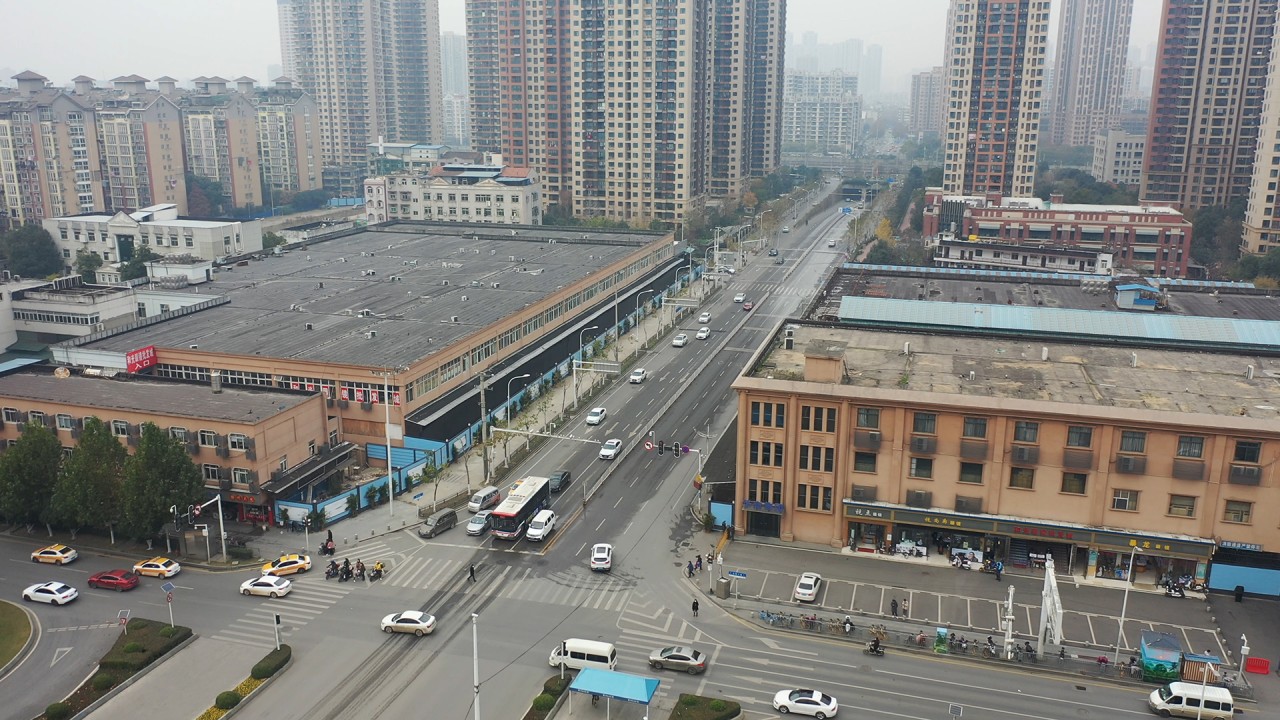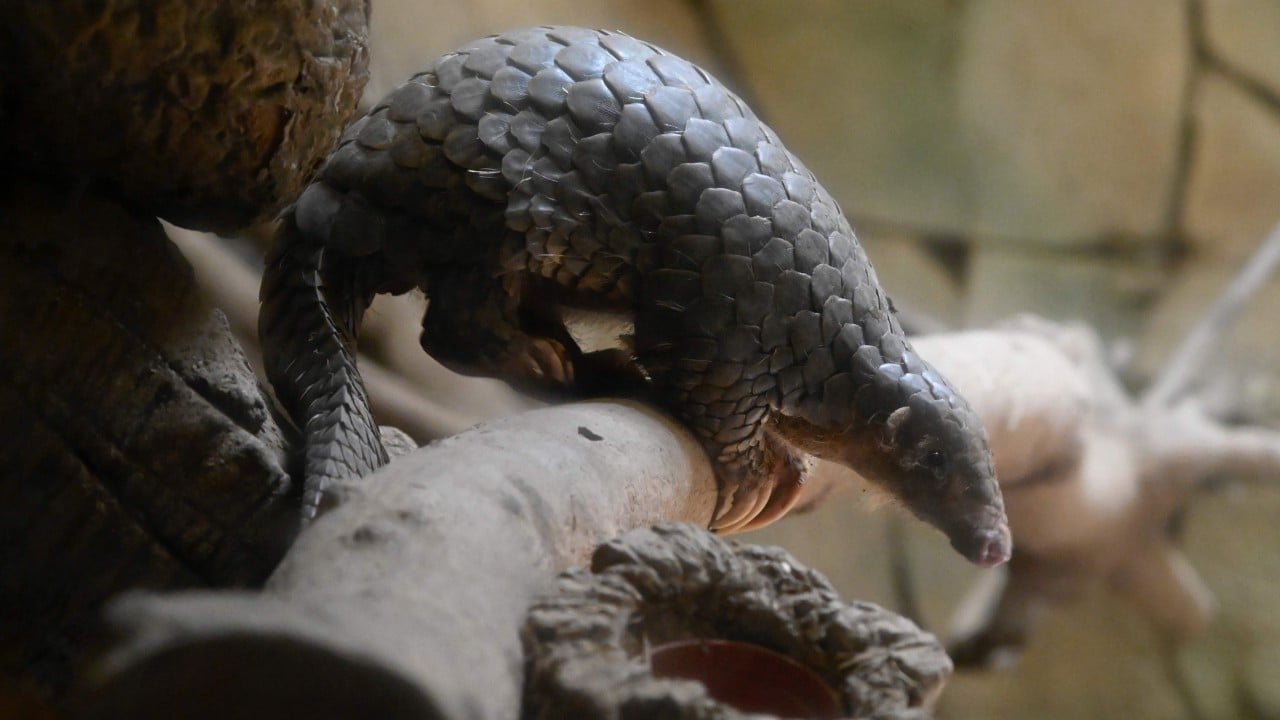
Game over for China’s wildlife food trade, but does ban go far enough?
- A year after the new coronavirus emerged at a Wuhan market, Chinese exotic animal breeders are moving into new areas of demand
- Experts fear the same old problems of high-stress environments and extensive contact with humans remain
This is the 10th instalment of a series looking back at the effects of the coronavirus outbreak one year after it first emerged in the Chinese city of Wuhan. Here, we examine the consequences for China’s wildlife trade. Please support us on our mission to bring you quality journalism.
The Huanan seafood wholesale market – ground zero for the pandemic – remains closed. Before it was shut late last year, around 100 varieties of live animals and poultry were on sale there, including peacocks, wolf cubs and masked palm civets, according to a stallholder’s post on review and rating app Dazhong Dianping.

01:30
Coronavirus ground zero market still closed in Wuhan, China almost a year since start of pandemic
Exotic animals are off the menu in Wuhan, with no trace of them in the city’s other markets, in stark contrast to the brisk business in the trade before the outbreak. Vendors told the South China Morning Post they had become used to the frequent inspections, following a government ban.
“No more live animals. You can go to jail for that,” an eel vendor at Qiyimen market said.
At a meeting in February with members of the Politburo Standing Committee, President Xi Jinping said: “We have long realised that the consumption of wild animals is very risky, but the wild animal industry is still huge and poses a major hidden danger to public health and safety. We can’t just sit by.”
While China has been lauded for suspending the wildlife trade, the failure to include other uses in the ban is likely to undermine protection efforts in the medium to long term, analysts said.
On December 20, China’s supreme court, justice ministry, and public security ministry released a joint directive, vowing to crack down on illegal hunting, procurement, transport and import and export of wildlife to “cut off the interest chain of the illegal wild animal trade”.
Animals hunted, traded and homeless host twice as many viruses that infect us
Offences will be punishable under criminal law – which carries maximum penalties of more than 10 years’ imprisonment, fines and confiscation of property – and law enforcers are expected to be tough, according to the directive, which relates to the more than 300 animals on China’s endangered and protected species list.
The directive was general in nature and did not mention the other uses of wildlife, apart from food, which experts believe is important if another pandemic is to be averted.
One difficulty in expanding tough action on wildlife is that it would have a devastating economic impact on some rural areas, where farmers have been encouraged to breed exotic species as part of the country’s poverty alleviation programme. Wild animals are used in a range of industries in China, including traditional medicine and furs.

02:46
Chinese rats, cobra farmers face debt and poverty after wildlife ban
The ban on consumption of wildlife has left millions of breeders struggling to make a living. One of them is Luo Bin, 36, who bred bamboo rats – a chubby, edible rodent – for 12 years, until May when they were removed from the national livestock and poultry genetic resources catalogue’s listing of permitted species.
Luo, who lives in Gongcheng county in the southern region of Guangxi Zhuang, said about 2,000 of his bamboo rats were “handled harmlessly” by the local government in June – destroyed, rather than sold.
He received 180 yuan compensation for each rat, below the market price of more than 200 yuan, but there was no replacement for the more than 200,000 yuan (US$30,600) he had invested in his farm.
China’s frog breeders silenced over opposition to wildlife trade ban
In September, Luo picked up the pieces and invested more than 100,000 yuan in a new venture – breeding bamboo worms, a kind of moth which develops in the bamboo groves. So far, business has been lacklustre. “Consumers do not yet accept bamboo worms. Fewer people eat them, compared with bamboo rats,” he said.
The main market for bamboo rats was in the southern and southwestern provinces of Guangdong, Yunnan, Guizhou and Sichuan – with more than 6 million animals consumed each year, according to a report in The Beijing News.
The trade lifted thousands out of poverty and was also a poverty relief project supported by the local government, according to Luo. He said his business had earned about 200,000 yuan a year, enough to support his family and three children.

02:25
Pangolins continue to face threat of extinction despite wildlife trade bans
According to official data, the bamboo rat programme was worth 7 billion yuan (US$1 billion) in poverty-stricken Guangxi and, in a bid to meet the national poverty eradication target, the region is working hard to help breeders adapt.
China’s rat, cobra farmers struggling to survive since trade ban
According to provincial party newspaper Nanguo Zaobao, Guangxi is encouraging its snake farmers to move into the supply of gall bladders and bile for medicinal use.
China’s wildlife trade was valued at 520 billion yuan (US$74 billion), employing more than 14 million people, according to a government-sponsored report published by the Chinese Academy of Engineering in 2017.
Among its sub-industries, the fur sector employed 7.6 million and accounted for 75 per cent of the industry’s total value. The food sector had a share of 24 per cent, with the rest taken up by medicines, pets and other sectors.

01:23
China removes pangolin from traditional Chinese medicine list
But environmentalists said China’s continued tolerance for non-food uses of wildlife was disappointing and dangerous.
“It is very disappointing that the ambitious and precautionary approach adopted earlier this year has not been extended to non-food uses,” Aron White, a wildlife campaigner and China specialist at the Environmental Investigation Agency, said. “This risks undermining the new policy both in terms of public health and biodiversity protection.”
Many of the conditions present in the breeding and trade of wildlife as food – such as high concentrations of animals in often high-stress environments, and extensive contact with humans during breeding, transport and processing – would still be present, even if the animals were destined for other purposes, he said.
“If new policies are intended to minimise potential for zoonotic disease emergence, it makes little sense to strictly prohibit one form of consumption while continuing to permit and encourage other forms.”
Dangers lurk for China’s ban on the wild animal trade
White said demand for use in traditional Chinese medicine was a major factor driving species like leopards and bears to extinction across much of their range – yet their medicinal use was still permitted in China, even after the policy revisions in the wake of the pandemic.
“When government policy continues to allow and legitimise medicinal use of these species instead of encouraging their replacement with sustainable herbal alternatives, it is very difficult to reduce demand,” he said.
Song Keming, an environmental activist and director of the China Conservation Area for Great Bustards in the central Chinese province of Henan, said there had been no let-up this year in the poaching, hunting and poisoning of wild birds, according to data from his organisation.
“The revised wildlife protection law does not cover non-food marketing of wildlife, leaving a big loophole and making law enforcement very difficult. When you catch a poacher, how can you verify if the wildlife is going to be used as food or not?” he said.
“The purpose, to protect the interests of traditional medicine and other industries, is unnecessary. Policymakers should realise the value of wildlife is not in how we utilise them. Their existence is of great significance in itself.”
Traditional Chinese medicine maker soars after expert backs product
Zhou Haixiang, a member of the Chinese National Committee for Man and Biosphere, an environmental protection group, said the pandemic had helped the public abandon the habit of eating game and raised awareness of the need to respect biodiversity.
“It will take time for policymakers to realise the importance of biodiversity, extending protection from rare animals to the whole ecological system,” Zhou said. “The public health crisis serves as a trigger, but we need a better perspective to address our ecological problems.”
Additional reporting by Zhuang Pinghui in Wuhan












